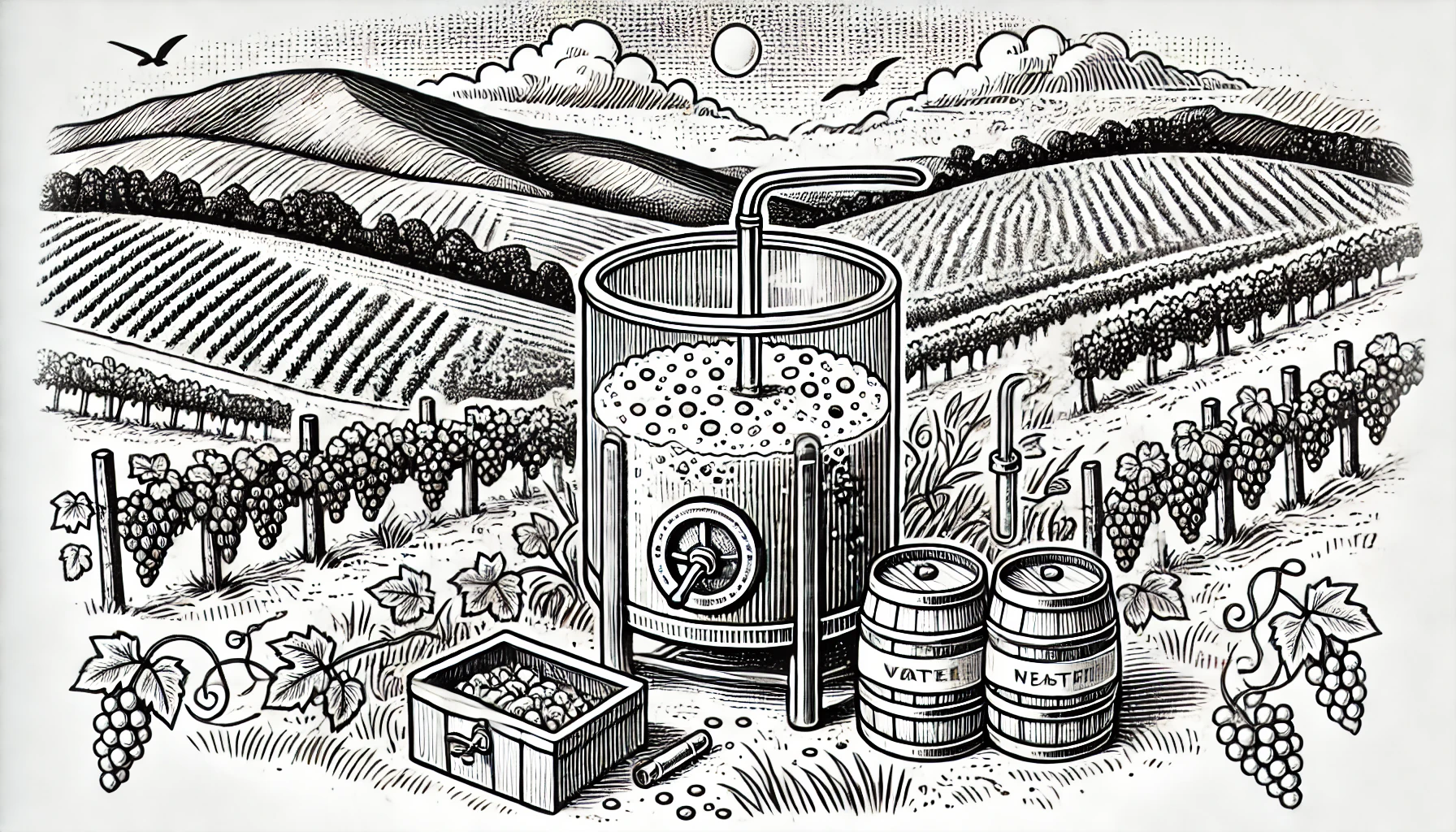
Spontaneous Fermentation is a winemaking method that relies on the natural, wild yeasts present in the vineyard, winery, and on the grape skins to ferment the wine, rather than using commercially cultivated yeasts. This process is also known as wild fermentation or natural fermentation and is often associated with natural and organic winemaking practices.
Unlike conventional fermentation, where winemakers add specific strains of yeast to control the fermentation process, spontaneous fermentation is less predictable and can result in a wider range of flavors and aromas. Wild yeasts are highly variable, and their activity can be influenced by a variety of factors, such as the local environment, temperature, and conditions during the fermentation process. This can lead to complex and unique wines that reflect the terroir and vintage more distinctly than wines made with commercial yeasts.
The process begins when the grapes are harvested and crushed, and the wild yeasts begin to consume the sugars in the grape juice, converting them into alcohol and carbon dioxide. Since different strains of yeast may become active at various points during fermentation, the process can take longer than controlled fermentation. Additionally, spontaneous fermentation may require more careful monitoring, as it can be unpredictable and occasionally result in stuck fermentations (when yeast activity stops before all the sugar has been converted to alcohol).
More Challenges – More Flavor Variety
Despite these challenges, many winemakers who use spontaneous fermentation believe it results in wines with greater character, complexity, and authenticity. The flavors in spontaneously fermented wines can be more nuanced and layered, with earthy, funky, or wild characteristics that are often absent in wines made with commercial yeasts.
Spontaneous fermentation is particularly popular in regions that embrace natural or minimal-intervention winemaking, such as parts of France (especially in the Loire Valley and Burgundy), Italy, and Spain. While the technique is not limited to these regions, it has gained popularity among winemakers worldwide who seek to produce wines that showcase the true essence of their environment and vintage.
Curious about more wine terms and insights? Visit our Wine Wiki section and explore the basic wine terms for expert definitions and tips!